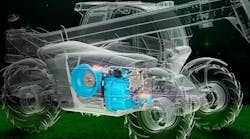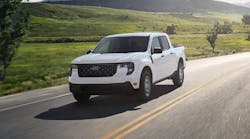Spring into fall
There is a silent threat among us. And it's one few of us want to discuss openly, let alone change. I'm not referring to anything as earth shattering as a health or diet issue. Rather, I'm talking about the model-year changeover for commercial trucks.
As the leading supplier of commercial vehicle values and identification, The Truck Blue Book is often called upon to explain this somewhat confusing model-year situation to those outside the industry. A typical question is: “September is the time for the new models, so why do I have a 2006 International vehicle in March?”
People not lucky enough to work in our industry associate a new model-year with the fall. New automobiles arrive in the showroom on Main Street about the same time as the new fall TV lineup, the start of the football season and the end of the baseball season.
It's my job to explain that a model-year changeover so early in the year has been established for a number of reasons, some of which involve sales and marketing factors. But perhaps the biggest force of all is the Mid-America Trucking Show, which is far and away the industry's largest venue for introducing new on-highway equipment.
New-model introductions that are relatively early in the calendar year can be a competitive advantage because they obtain buyers before a competitor's product is available. But these gains are being made at the cost of lowering used values, longer inventory turnover of new equipment and increasing sales incentives for that new equipment inventory.
It's only February 2005, and the 2006 models will be released shortly. (I wouldn't be at all surprised if a few 2006 models have not already hit the streets.) Nothing like taking delivery of a 2005 highway tractor in January, only to discover that it has aged a year in just three months.
In general, the used market in gives little, if any, attention to a vehicle's production date. It really will consider this 2005 truck as a year old once the 2006 models are out there. Depending on what type of equipment we're talking about, this could mean a drop in value of $8,000 - $12,000.
On the upside, the mileage should be relatively low, giving it a slightly higher used value. However, that early February or March 2006 model will have high mileage when it's traded in three years from now. So it could be a wash in terms of a trade-in package.
Such an early changeover presents a challenging situation for a used value guide like the Truck Blue Book. I just added the 2005 model-year to the January 2005 edition of the Blue Book, and by the April edition the 2006 model-year will be in the market. Things were even more complex because I had to consider the value of 2004 model-year vehicles for the first time. Although the most recent used trucks may be in the Blue Book, they're not valued until the end of the first full calendar year. We need time to collect sales data, as well as other information, to provide the most accurate forecast of used-truck value for any model year. But believe me, I'll get at least one phone call by the end of July asking about the used value of a model-year 2006 tractor.
No matter when a model-year changeover occurs, there will always be a decrease in the used value of the current model-year vehicles, as well as a slowdown in sales.
It's the fact that the model-year changeover is so out of sync with the calendar year that causes havoc with used values. For example, if you take delivery of a 2006 model-year tractor that was built in April 2005 and trade it in three years, it will be calendar year 2008 when you trade it in. So while it will look like you are trading a tractor that's two years old, it will really have three years of miles on it. This could result in a significant mileage penalty, perhaps off-setting any value gained from what looks like a two-year-old tractor.
I am not necessarily advocating that the industry change the new model-year changeover. I just want to offer a word of caution about the used value of your “two-year-old” tractor.
But should you want to change the model year…


